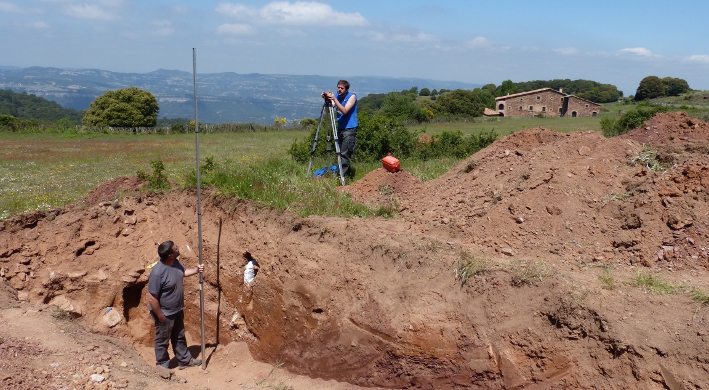Parc Natural del Montseny

The Bellver, L’Agustí and El Passerell farmhouses (‘mas’ in Catalan) are located at the foot of a hill called Turó de Tagamanent. The oldest parish records referring to the organisation of this space date from the 10th century. Mas Agustí is mentioned in a late 12th century document. This articulation of centres of power and farms is invaluable for studying how buildings and land used for crops and pasture were organised in feudal times. The current landscape is the result of the original medieval layout of buildings and fields, and the changes, extensions and abandonments that have occurred through to the present day. A historical understanding of this landscape involves studying the different components of the site (castle, churches, houses and other buildings, structures like threshing houses, granaries and watering troughs, irrigated fields, pastureland, forests, paths and so on) and the changing relationships between them.
Aside from the potential of the area for educating students on archaeology and history degrees, and the possibilities for research, this heritage site serves many other valuable purposes. As well as the refurbishment of the castle, the Santa Maria and Sant Martí churches, and the farmhouses (there is a master plan for the castle, Bellver operates as a restaurant, the Agustí house has been turned into a museum and El Passerell is abandoned), teaching and research linked to the UAB can offer a broader and more original perspective of this heritage. The historical knowledge generated through the combined use of written documentation and archaeology could lay the foundations for making the whole space into a museum, presenting it in a way that makes the relationship between the buildings (castle, churches and farmhouses) and agricultural practices diachronically intelligible, ultimately giving them some kind of meaning. The ditches, roads, terraces, pastureland and so on would thus no longer be unconnected and meaningless elements of the landscape, but would form an articulated and intelligible group, which could also be perceived as a consistent trail of fundamental knowledge and practices that have since been lost, and which are difficult to apprehend by any other means, and that generated the landscape that can still be seen today.